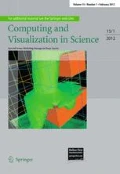Abstract
The quantitative assessment of risks associated with several types, eg, rating methods for cash-flow driven projects, can be reduced to determining the probability that a random variable, for instance representing a cash-flow, drops below a given threshold. That probability can be derived in an analytic closed form, if the underlying distribution is not too complex. However, in practice there is often a reserve account in place, which saves excess cash to reduce the volatility of the cash-flow available for debt service. Due to the reserve account, the derivation of a solution in an analytic closed form is even in the case of rather simple underlying distributions, eg, independent Gaussian distribution, not feasible. In this paper, we present two very efficient approximation methodologies for calculating the probability that a random variable falls under a threshold allowing the presence of a reserve account. The first proposed approach is derived using transition probabilities. The resulting recursive scheme can be implemented easily and yields fast and stable results even in the case of dependent cash-flows. The second methodology uses the similarity of the considered stochastic processes with convection-diffusion processes and combines the stochastic transition probabilities with the finite volume method, which is well known for solving partial differential equations. We present numerical results for some realistic test problems demonstrating convergence of order h for the transition probability based approach and \(h^2\) for the combination with the finite volume method for sufficiently smooth probability distributions.



Similar content being viewed by others
References
Bank, R.E., Rose, D.J.: Some error estimates for the box method. SIAM J. Numer. Anal. 24, 777–787 (1987)
Bressloff, P.C.: Stochastic Processes in Cell Biology. Springer, Berlin (2014)
Cai, Z.: On the finite volume method. Numer. Math. 58, 713–735 (1991)
Capinski, M.: A model of credit risk based on cash flow. Comput. Math. Appl. 54, 499–506 (2007)
Cetin, U., Jarrow, R., Protter, P., Yildrim, Y.: Modelling credit risk with partial information. Ann. Appl. Probab. 14, 1167–1178 (2004)
Coffey, W.T., Kalmykov, Y.P., Waldron, J.T.: The Langevin Equation: With Applications to Stochastic Problems in Physics, Chemistry, and Electrical Engineering. World Scientifc, Singapore (1996)
Crosbie, P., Bohn, J.: Modeling Default Risk. Moody’s KMV, Technical Report (2003)
Das, S.R., Hanouna, P.: Implied recovery. J. Econ. Dyn. Control 33(11), 1837–1857 (2009)
Gardiner, C.W.: Handbook of Stochastic Methods. Springer, Berlin (2004)
Hackbusch, W.: Multigrid Methods and Applications. Springer, Berlin (1985)
Hackbusch, W.: On first and second order box schemes. Computing 41, 277–296 (1989)
Kolmogorov, A.: Über die analytischen Methoden in der Wahrscheinlichkeitsrechnung (On analytical methods in the theory of probability). Math. Ann. 104, 415–458 (1931)
Kwak, H.K., Ingall, L.: Exploring Monte Carlo simulation applications for project management. Risk Manag. 9, 44–57 (2007)
Merton, R.: On the pricing of corporate debt: the risk structure of interest rates. J. Finance 29, 449–470 (1974)
Rausch, R., Schäfer, W., Therrien, R., Wagner, C.: Solute Transport Modelling—An Introduction to Models and Solution Strategies. Gebr. Borntraeger Verlagsbuchhandlung Science Publishers, Stuttgart (2005)
Risken, H.: The Fokker–Planck Equation: Methods of Solution and Applications. Springer, Berlin (1996)
Weber, F., Schmid, T., Pietz, M., Kaserer, C.: Simulation based valuation of project finance—Does model complexity really matter? Working Paper No. 2010–3, Center for Entrepreneurial and Financial Studies, TU München (2010)
Author information
Authors and Affiliations
Corresponding author
Additional information
Communicated by Gabriel Wittum.
Rights and permissions
About this article
Cite this article
Riemer, S., Wagner, C. An efficient approach for calculating default probabilities for cash-flow based project finance with reserve account. Comput. Visual Sci. 17, 203–216 (2015). https://doi.org/10.1007/s00791-015-0258-7
Received:
Accepted:
Published:
Issue Date:
DOI: https://doi.org/10.1007/s00791-015-0258-7




